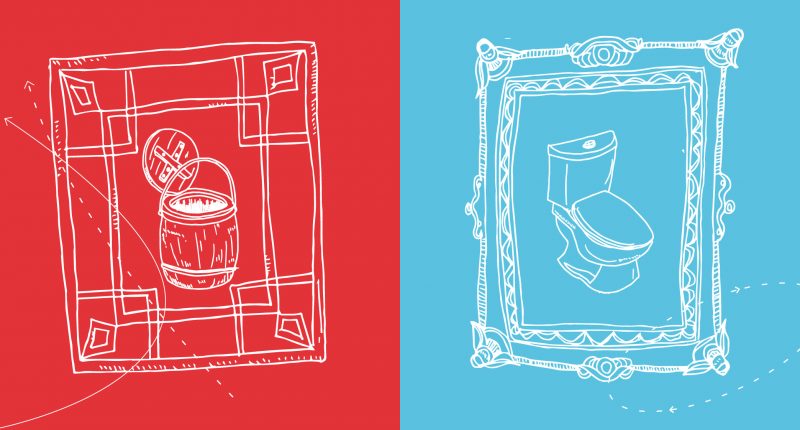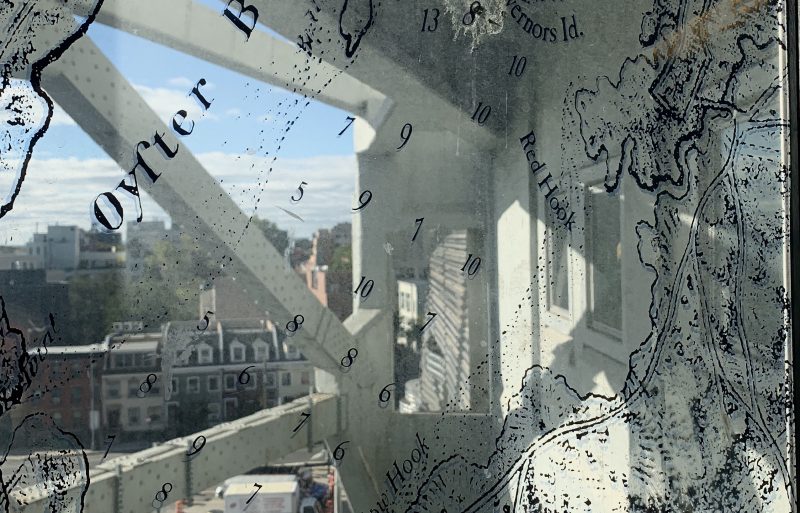Decolonization thinking triggered by toilet
Posted on November 14, 2019When my mind went blank for my assignment, I used to wander around in my apartment. But it was a little bizarre this time: I walked to my bathroom’s door, suddenly realized a creepy thing: my past life was surrounded by all kinds of colonialism, and I didn’t perceive its existence. Why not?
Perhaps, it was because the modernization of urban toilets that I enjoyed in China was brought over by the eight-nation alliance. Yes, they were the bandits who stole and destroyed uncountable Chinese cultural heritage and the rioters who murdered innocent Chinese people. On the contrary, it was their invasion that ended Beijing’s unimaginable feature, which was a colossal public toilet at that time. Until the end of the Qing dynasty(1900), the restroom still wasn’t a part of the architectural model of Chinese home. Washing commode was a time-consuming mission, so a lot of people just went out on the street and addressed their “daily-human-needs” publicly. At the same time, there were no sanitation dustman in Beijing or any of China’s major cities to clean up the roads, making them become vessels for all kinds of trash. According to the French philosopher and historian Michel Foucault, the attitude and method of dealing with excrement in a society represents their perspective of order and their operating approaches of hierarchical power. Unsightly and chaotic city management can be seen as a moral deficiency.[1] Apparently, this huge public toilet was intolerable to European invaders who had experienced the black death. Therefore, western civilization became their invasive reason to interfere rudely with the traditional living style of Chinese people, including enacting regulations and even physical punishments.

Drawing by Jin Li
However, as a youth living in China after this toilet revival, my attitude of it is at least they incentivized a positive result for accelerating our country’s modernization. Am I politically incorrect? Perhaps, colonization in China is just a label without the unwieldy pessimistic and heavy political implications. Perhaps, the incomprehensive colonial education induced the general public to have less profound vigilance of decolonizing thinking. Instead, most of the Chinese people will decide their attitudes by observing the impact of colonization on a contemporary living environment. For example, in my hometown, Guangzhou, one of the hottest locations of wedding photography is Shamian Island, which used to be a Chinese concessions for Britain and France during 1900. Roaming on this small island, one can see the architectural groups’ styles of neoclassicism, eclecticism, neo-baroque and gothic. But, based on hearsay, there was a stone tablet engraved that “NO DOG OR CHINESE ALLOWED.” In Shanghai, for instance, the best dating choice for young people is the stylish cafe in downtown, which was also a French concession. Being the connective port with the external world, Shanghai’s regional culture is a form of inclusivism. This characteristic of combining the Chinese genre with western style is recognized as the authentic Shanghai feature.
Nonetheless, I have to admit that my toilet decolonization opinion is skewing prodigiously through immersing myself in our TransD learning adventure. The reading requirement of D4TC two weeks ago was A People’s History of the United States, illustrating the unarticulated negative influences of Columbus’s discovery on the native American and modern social fabrication.[2] Columbus’s image depicted in the book is an evil European that I have never perceived before. Additionally, the studio I’m participating in is urban maintenance, which is a parallel topic with my graduation design three years ago. From the beginning, I felt confident enough for utilizing my design strength to contribute to the Red Hook community, but now I have been questioning my engagement sincerely. A new idea hovering in my head is whether being a participant in an unfamiliar community as a designer is a distorted disruption of their community’s ecosystem? I lack the educational backgrounds with historical or philosophical context, and my science knowledge base has entered the dormant state for a quite long period since I graduated from high school. I take five different courses per week, with my low English reading efficiency, which means I cannot be fully involved in taking care of this community, even though I try my best all the time. It seems like, this place has become a springboard for me to digest the knowledge of urban planning swiftly, instead of a place that I should care about conscientiously. For me, my participation in this project brings me a bright future in urban management. For Red Hook, my involvement becomes a temporary spoiler. Unfortunately, I cannot contribute back to this community with what they truly need. As Nussbaum wrote in Fast Company: “Are designers the new anthropologists or missionaries, come to poke into village life, ‘understand’ it and make it better–their ‘modern’ way? ”[3] Now, I’m feeling my design becoming harms instead of helps. [4]

Transparent Old Map of Red Hook, Photo: Jin Li
I began to deny myself and doubted my original knowledge daily. I know, this is a typical learning process. But does this ego-dystonic feeling also means that TransD is colonizing my brain? How can I label the impact of colonization on me? Is this short-term learning mission can be regarded as a novel colonizing agro-design approach toward the research object? On the second blog, I still can’t grasp the answer as to why I am playing a wordless character in our seminar persistently. Although I completed a debate two weeks ago, I don’t believe I’m competent enough to achieve it.
-JL
Reference:
- Medicine and Empire:1600—1960, Pratik Chakrabarti. 帝国与现代医学, trans. Shangren Li, 2018
- A People’s History of the United States, Howard Zinni. 1980
- Bruce Nussbaum, “Is Humanitarian Design the New Imperialism?” Fast Company(Blog), July 06, 2010, https://www.fastcompany.com/1661859/is-humanitarian-design-the-new-imperialism
- Bruce Nussbaum, “When Design Harms Instead Of Helps.” Fast Company(Blog), May 20, 2015, https://www.fastcompany.com/3046462/when-design-harms-instead-of-helps
- Lara Penin, An Introduction to Service Design: Designing the Invisible, 2018, 199-233.
- Don Norman, “Why Design Education Must Change”, Core77(Blog), December 03, 2010, https://www.core77.com/posts/17993/why-design-education-must-change-17993